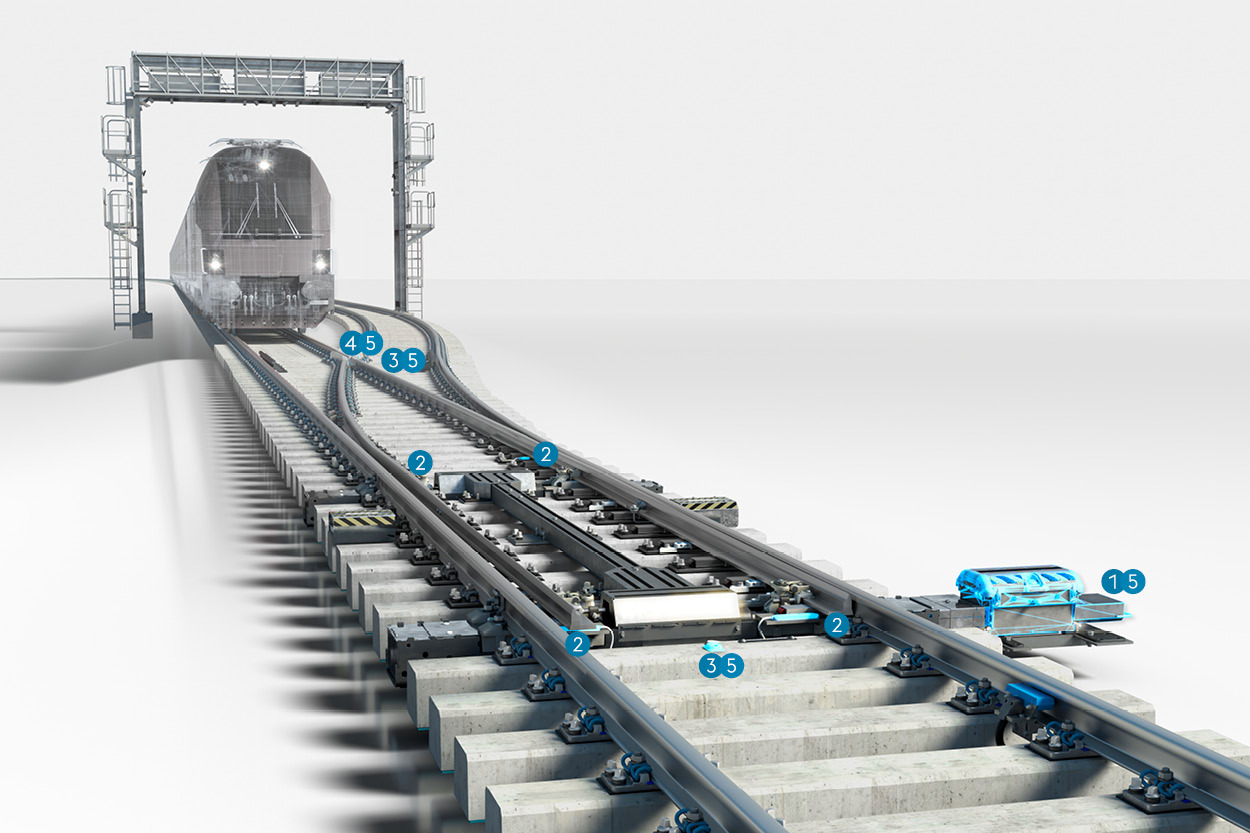Intelligent Turnouts
DIGITAL PERFORMANCE ON TRACK®
The turnout stands as a pivotal asset within the railway system, its malfunctions causing disruptive delays and interruptions. Recognizing the imperative of streamlined railway operations, voestalpine Railway Systems has centered its efforts on optimizing this essential track element using cutting-edge technology.
Discover four compelling reasons why integrating sensors and software to empower switches and crossings is the future:

Enable precise and demand-responsive maintenance actions, minimizing expensive downtimes and optimizing train intervals.
Prolong the lifespan of turnout components and assets, maximizing your investment.
Decrease maintenance expenses while enhancing the availability and profitability of your railway system.
At voestalpine Railway Systems, our Intelligent Turnouts are designed with a modular approach, allowing you to tailor your experience by choosing the information that matters most to you. Here's why our Intelligent Turnout Systems will drive your success:
For unmatched availability and the lowest lifecycle costs, trust voestalpine Railway Systems to deliver Digital Performance on Track®.
Contact us now to discover how our Intelligent Turnout Systems can revolutionize your railway infrastructure!
If you have questions or feedback, please feel free to contact us. We are happy to help!